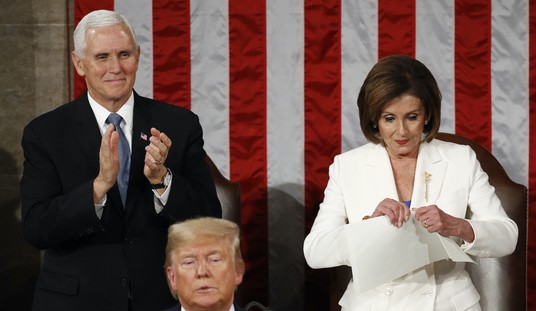=========
=========
Promoted from the diaries by streiff. Promotion does not imply endorsement.
=========
=========
It is conservative mantra that the federal Department of Education should be abolished. The Department was established by Jimmy Carter as a payback to the teacher unions that supported him in 1976. Before that, the responsibilities relegated to the new department fell under the Department of Health, Education and Welfare. That previous department was created in 1953 under the Eisenhower administration. In fact, a federal Department of Education had been proposed as early as 1923 by Warren Harding.
However, over the years the federal Department of Education has grown into a behemoth bureaucracy. Every fiscal year, it becomes the source of contention between both parties regarding funding. Even when they somewhat agree on an overall level of funding, there are arguments over what to fund. The problem, this writer believes, traces back to Johnson’s War on Poverty in the 1960’s. In 1965, the federal government decided to insert itself into the funding of primary and secondary education in public schools throughout the country. The purpose was to improve educational outcomes in schools with low-income families (Title I).
Ever since its passage, there have been changes the most obvious of which was No Child Left Behind under the George W. Bush administration. Additionally, the qualifications for funds has changed over the years and now stands at 35% attendance from low-income students which basically takes in a large amount of school districts nationally given the ever-changing definitions of “low income.”
However, a strange pattern which conservatives correctly note has occurred. Up to the passage of ESEA in 1965, many minority and low income students were making slow but steady gains in academic performance. Granted, they came nowhere near where the more affluent students performed. But, when that federal money started to flow into local school districts, measurements on academic performance- the ultimate goal- stagnated or started to slide backwards. In states where improvement did occur, most of it was due to innovation at the state or local level regardless of federal funds.
Overall, despite the enormous expenditures, federal funding for elementary and secondary education accounts for about 12% of all funding for any given school district’s funding. Of that money, it is estimated that about 70% of it actually reaches the classroom. The reason is simple: with funding comes accountability and mandates. In order to satisfy these requirements, about 30% of all federal funds are siphoned off to administrative tasks that must navigate the byzantine mandates. Hence, many school districts have created yet another layer of bureaucracy at the local level to deal with these issues.
ESEA and its offspring have been a five decade exercise in futility. One can argue that we are no better off than we were in 1969 regarding academic performance. To the degree performance has increased, it does not justify the enormous expenditures.
Thus, it makes sense to divorce elementary and secondary school funding from the federal Department of Education. Every state- red, blue and purple- will cry about the loss of funding but that is no excuse to continue a five decades failing experiment. It is not fair to all US taxpayers. Without the federal funding, state and local governments would obviously have to find ways to fill in that 70% of 12% funding gap. Part of that could be made up with lower administrative costs that accompanied the federal guidelines and mandates. And, yes- they would have to consider increasing taxes and/or cutting costs elsewhere, but that would be a decision better left to state and local governments.
But, this does not infer that the Department of Education itself should be abolished altogether as a result. The new Department would be dedicated to the myriad number of federal scholarship, grant, and loan programs available to college students. For example, a grant or scholarship handed out by NOAA could easily be transferred to the new Education Department. This would streamline the process and make it more efficient. Contrary to popular belief, there are some successful federal programs when it comes to higher education. TEACH grants and ROTC come readily to mind.
While some may argue that the federal government should stay out of even this level of education, history dictates otherwise. As early as 1862, the federal government through the Morrill Act provided funds for land grant colleges. In 1917, the Smith-Hughes Act provided federal funding for vocational training. Later in 1944, the G.I. Bill became law which transformed society for the better by educating those who served their country. One of the most successful federal government interventions into higher education is the ROTC program that dates to 1862. Obviously, the case for- given its success- federal involvement in higher education stands on more firm practical and historical ground than involvement in elementary and secondary education.
Furthermore, the purpose of higher education is to create graduates who will become productive members of society and the economy. Many of the vocational training programs administered by the Department of Labor (and other departments) could be transferred to a reformed Department of Education. And hopefully, someone will recognize that a graduate of Gender Studies does not contribute to society, let alone the economy.
This is obviously a pipe dream and will never actually happen given the lack of conservative spine in today’s Congress. But any effort towards these goals is worthy of an attempt.












Join the conversation as a VIP Member